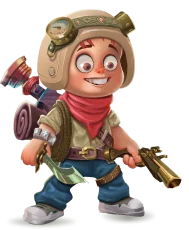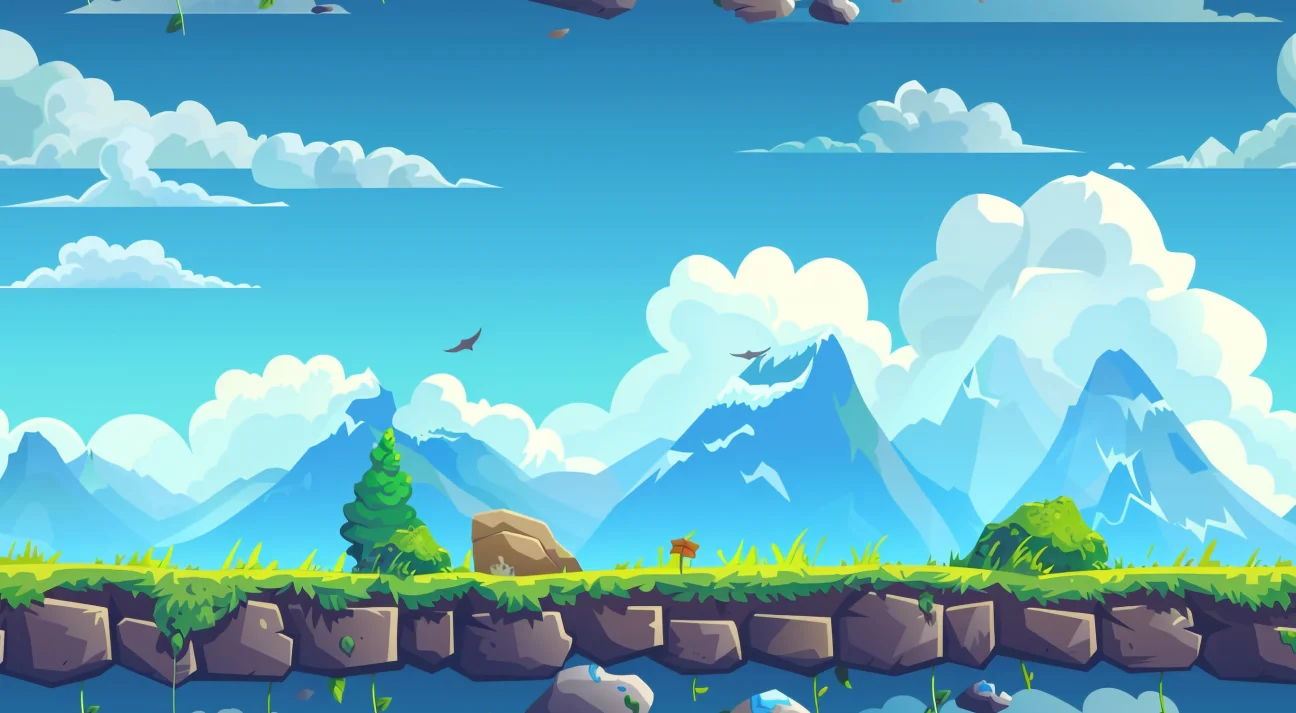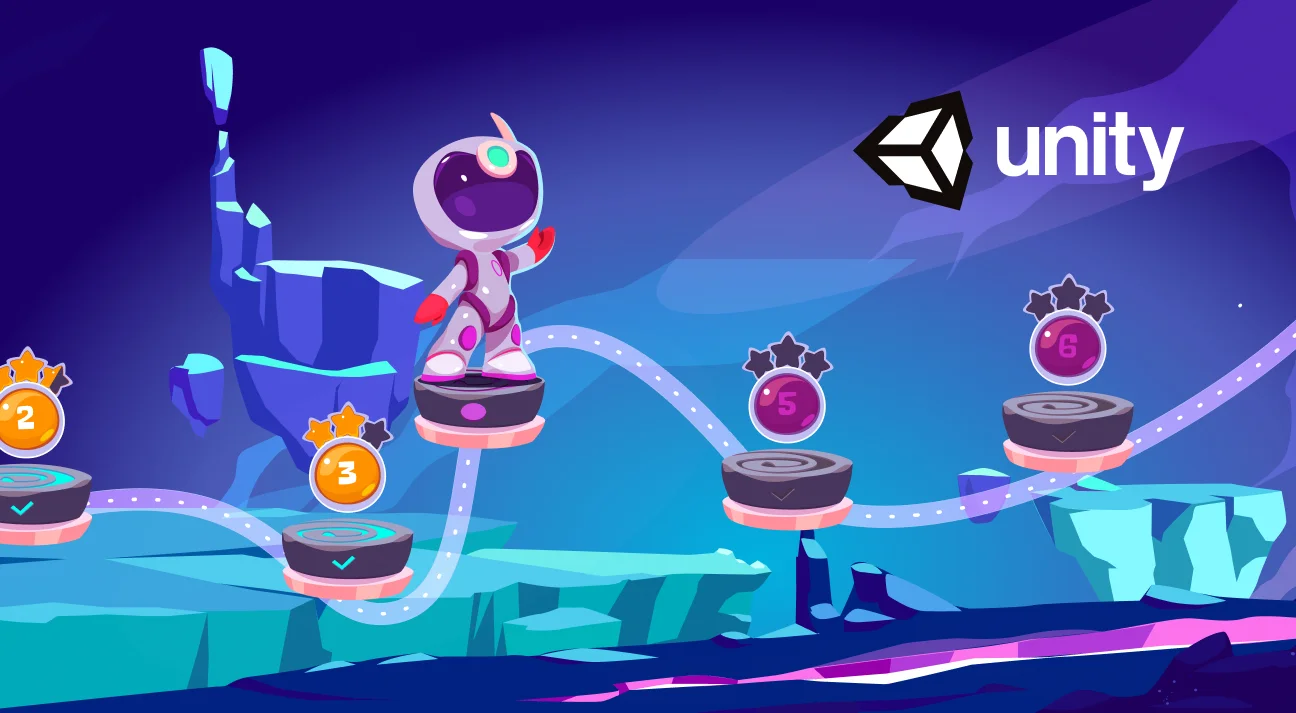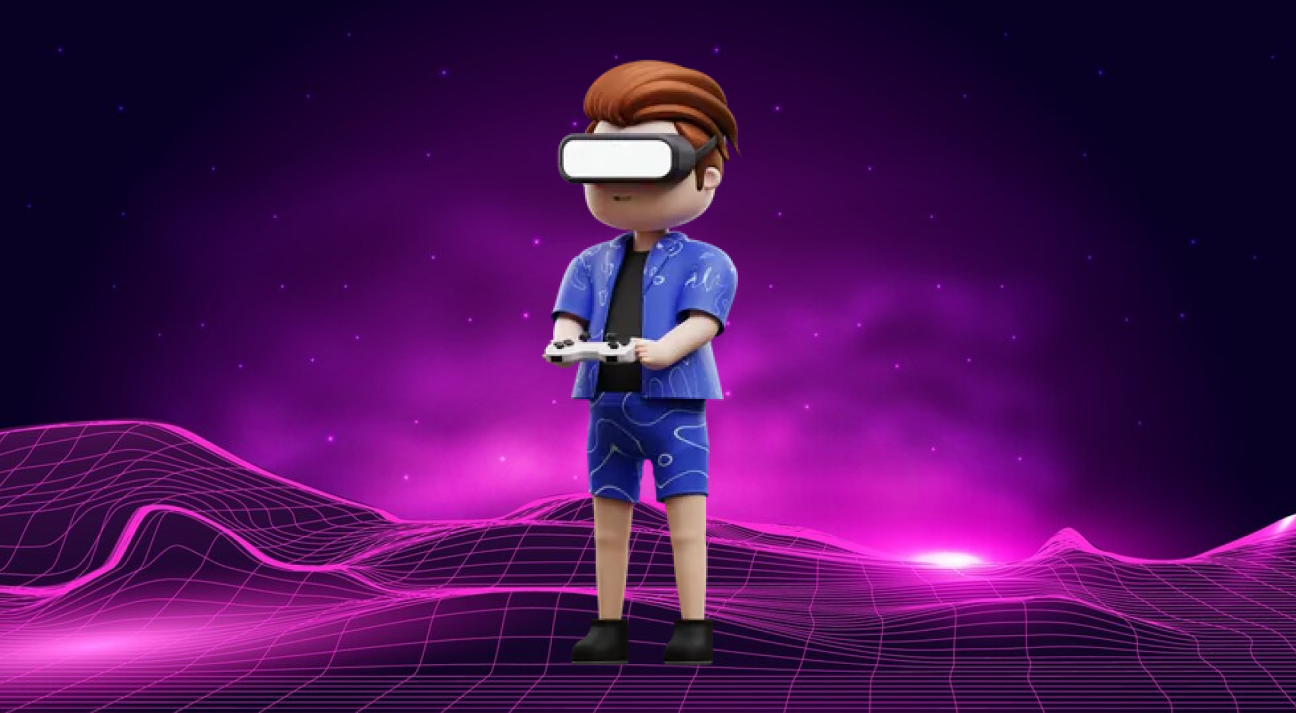
How Much Does Metaverse Game Development Cost?
With virtual worlds gaining momentum, metaverse gaming is gaining tremendous popularity(among gamers and entrepreneurs/startup founders alike) for its unique and immersive qualities. For entrepreneurs, it offers vast opportunities for innovation and business growth. While for gamers, it is a new frontier of gaming, combining entertainment, social interaction, and economic opportunities.
The Metaverse’s potential to redefine entertainment, social interaction, and business has led to its rising appeal among both creators and players, making it a thriving sector in the gaming and tech landscape. This leads us to one of the pivotal decisions of whether you would be able to grab this business opportunity or not. One of the leading factors that would significantly impact this decision is the cost of developing a Metaverse game.
But before we get started with knowing more about it, let us understand more about Metaverse gaming and the reasons for it being a good investment opportunity for business idea seekers.
What is a Metaverse Game?
Metaverse gaming is a unique and immersive form of digital entertainment rather than a futuristic gaming experience that integrates elements of virtual reality (VR), augmented reality (AR), and online multiplayer environments to create a vast, interconnected virtual universe.
In a Metaverse game, players can explore, socialize, play solo games against artificial intelligence or other players, and interact with the expansive virtual world. These games go beyond conventional gaming experiences, given it is in the 3D-enabled virtual space.
Why Should Businesses Invest in Metaverse Game Development?
The growth of virtual reality (VR) technology has made Metaverse games more accessible and engaging, allowing players to step into these virtual realms. This is not just an opportunity for gamers to experience an unconventional gaming realm but also for investors and entrepreneurs to seek a futuristic revenue generation opportunity. This however can be better explained with some of the facts and figures.
According to Markets And Markets forecast, the global Metaverse gaming market size is anticipated to be valued at approximately $22.7 billion in 2023 and $119.2 billion by 2028.
As mentioned by CEO David Baszucki, upon release of Roblox Corp.’s earning report, it had nearly 55 million daily active users in January 2022. For gaming entrepreneurs, these are the figures they seek when it comes to investing in opportunities like this.
Also, fear of missing out (FOMO) is playing a significant role in the fast-growing interest in Metaverse among entrepreneurs.
Factors that Affect the Cost of Developing Metaverse Games?
Creating a Metaverse game is an exciting journey, but it’s essential to understand the factors that influence its cost. From the technology you use to the size of your development team, several aspects come into play. So, let’s learn more about these factors, one by one, to shed some light on what makes the overall cost of Metaverse game development.
Technology & infrastructure
Those high-quality graphics, immersive user experience, complex 3D world, realistic physics and more would not be possible without the high-end hardware and software. Metaverse games often rely on cutting-edge technologies like:
- Virtual reality (VR)
- Augmented reality (AR)
- Mixed Reality
- Extended Reality
- Blockchain
- Cryptocurrency
- 3D Reconstruction
- The Internet of Things (IoT)
- Edge Computing
Besides, to build a game in the metaverse use of game engines(Unity or Unreal Engine) is inevitable.
The choice of platforms, 3D scanning and modeling technologies, 5G, robust server networks, cloud services and computing tools, and content delivery networks also would have a substantial impact when determining the cost of creating metaverse games.
Platform
The choice of platform whether it be PC, console, mobile devices, or virtual reality(VR) headset, would not only impact the complexity of Metaverse game development but eventually affect the cost of development. As development tech/tools, User Interfaces, integration/resource requirements, and more vary for each platform.
To illustrate, when developing a game for a VR headset there is an extensive requirement of 3D modeling and optimization which would add to the cost of metaverse game development. The approximate cost of VR game development starts from around $50,000 and can go up to several million dollars depending on the high-end VR game development requirements.
Hardware
The hardware needed for developing Metaverse games includes VR equipment like Head-Mounted Displays (HMDs), VR headsets, and smart glasses, along with peripherals like motion controllers. To ensure smooth gameplay, game developers for hire often require high-end processors with a significant VRAM (Video Random-Access Memory). Haptic devices, while optional, can provide immersive tactile feedback to players.
While the HMDs and VR headsets would cost you anywhere around $300 to $800 or more, the motion controllers would cost between $50 to $200. Whereas the high-end processors with ample VRAM would cost you from $300 to $600. Lastly, haptic devices, if used, can add an additional $50 to $200 to the hardware expenses.
These hardware costs should be factored into the overall budget for Metaverse game development, as they play a crucial role in creating a high-quality and immersive virtual experience.
Type of game
Various game types present distinct market sizes and revenue-generating opportunities. As per statista’s market insight, Metaverse gaming would reach a market size of 168.4 billion USD with action, adventure, and casual being the major contributors.
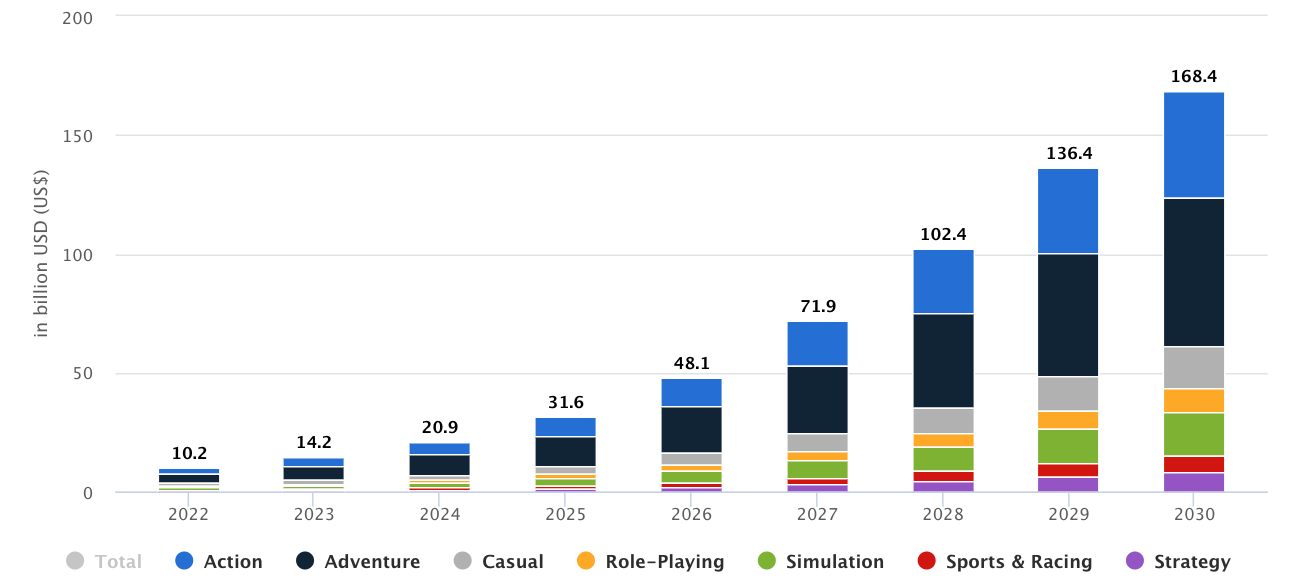
However, not all game types could cost you the same. Each type of game has distinct requirements, complexities, and more. The games with complex gameplay, vast open worlds, and extensive player interactions would cost you more than a casual social game with simple mechanics and interactions.
Here are some of the game types and their approximate metaverse game development cost:
- Casual Mobile Game: $10,000 to $100,000
- Puzzle or Arcade Game: $20,000 to $200,000
- Platformer or Adventure Game: $50,000 to $500,000
- Simulation and Sandbox Games: $100,000 to $1 million
- MMORPG: $1 million or more
- Competitive Esports Games: $1 million or more
These cost ranges can vary based on the complexity, features, and platform of the game. Understanding the type of game you want to develop is essential for budget planning in metaverse game development.
The size of the team
The number of developers, designers, testers, 3D modelers, and more you have in your team would contribute to the overall cost of developing the Metaverse game. However, hiring a dedicated team would provide you the flexibility of opting for the engagement model(time and material, fixed cost, or hourly rates) as per your budget constraints.
Having a smaller team is the first thing that may come to mind when it comes to cost-effectiveness(which is true) but it would impact the project’s timeline. Having a large team would enable faster development but come with higher labor costs. To make the right decision, ensure to choose the team size depending on your project’s scope, timeline, budget, and more.
Multiplayer functionality
Including multiplayer functionality in a metaverse game significantly impacts development costs. Creating a seamless and engaging multiplayer experience involves complex networking, server infrastructure, and testing to ensure stable gameplay.
The cost can vary based on the number of players supported, the scale of interactions, and the need for dedicated servers. Implementing features like voice chat, real-time interaction, and synchronized environments can also raise development costs. The cost of incorporating multiplayer functionality in a metaverse game can range from tens of thousands to millions of dollars, depending on the game’s scale and complexity.
Developer’s location
When hiring a developer or a dedicated game development team, among other factors, their geographical location(region/country) would have a significant impact on their cost. This difference in the cost is the result of differences in labor costs, overhead expenses, taxation, and more. Here’s a list of developer’s locations and their approximate cost of development (based on average hourly rates):
- North America (e.g., the United States and Canada): $50 to $200 or more
- Western Europe (e.g., United Kingdom, Germany): $40 to $150
- Eastern Europe (e.g., Poland, Ukraine): $35 to $60
- Asia (e.g., India, Philippines): $25 to $50
- South America (e.g., Brazil): $25 to $60
- Middle East (e.g., United Arab Emirates): $40 to $100
Recommendation: Apart from costs consider factors like the quality of work, language, cultural compatibility, and the availability of talent when making the decision to outsource your game development project.
Game design
It is the design that would give life to the concept and storyline. Game design is the critical factor in overall Metaverse game development, it would affect the cost of developing Metaverse games.
Though the cost associated with the game design aspect is $50,000 to several million dollars, there are several considerations(interactive environments, complex gameplay features, designing avatars, customization options, innovative mechanics, and more) that would impact the cost estimation of the game design.
Marketing costs
Once you have the game deployed or ready to deploy, its marketing is vitally important for attracting gamers, gaining a social presence, building a community, and ensuring your game gets the attention it deserves. A well-executed marketing strategy can significantly impact the success of a metaverse game.
Marketing activities would include running advertisements, maintaining a website or social media presence, attending gaming events, collaborating with influencers, and more. Marketing costs (thousand USDs for a modest campaign to millions for larger-scale efforts) can vary greatly depending on the scale of your campaign and your target audience.
Note: All the costs mentioned above are approximate figures and may vary depending on various factors over time.
Upon being aware of the Metaverse game development cost, the next step towards making your Metaverse game a reality is learning about the development stages. Read further to learn more about how you can build a Metaverse game.
How to Develop a Metaverse Game?
As the concept of the metaverse continues to gain prominence in the world of gaming, it’s essential to understand the fundamental steps and considerations involved in bringing a metaverse game to life. Let us learn the key stages of this multifaceted process.
Conceptualize the game
Just as a vague idea needs work before it looks like a feasible option. The very first step begins with idea generation and market research. Begin with building upon a game concept you wish to bring to life characters, mechanics, user experience, in-game activities, unique features, art styles, and more. Give a thought to how you want the players to interact with the game, socialize, and more.
Apart from working on your game concept, it is indispensable to have an idea of current market updates including the current top Metaverse games, player demographics, emerging technologies, market gap, and more. It would enable you to tailor the game art styles and plays according to the players’ preferences.
Hire Metaverse game development company
Metaverse game development is a complex undertaking and requires a specialized team with a peculiar skill set, having an in-house team for it would result in exorbitant cost. It would be lucrative to hire a game development company instead that specializes in Metaverse game development.
From ideation to development, testing, deployment, post-deployment maintenance and support, and even marketing. They would have a team skilled in 3D animation/modeling, world-building, multiplayer networking, and virtual reality technologies. They can help you navigate the complexities of Metaverse development, ensuring a high-quality, engaging experience for your players. Collaborating with experts would be a crucial step in your journey to creating a successful Metaverse game.
Choose the right blockchain network
The choice of blockchain network/platform would have a substantial impact on various game aspects like scalability, game performance, features, security, development tools, and more. For instance, Ethereum is a popular choice, known for its smart contract capabilities and wide adoption. However, newer platforms may offer faster transactions among other perks.
Each network has its strengths and limitations, so align your choice with your game’s specific requirements and the experience you want to deliver to players in the Metaverse. Make sure to align your choice with your game’s specific requirements and long-term goals.
Design the game characters, environments, and assets
Game design plays a crucial role when it comes to offering an engaging user experience to metaverse gamers. Whether it is the gaming environment, landscapes, characters, and more. Further, it designs a wide array of in-game assets, including objects, vehicles, and structures, to populate the virtual universe. Designing each component of the game thoughtfully enhances its depth and appeal.
Creating a game storyline
Apart from concept, characters, assets, or environment, it is the storyline of the game that shapes the player’s experience and immersion within the gaming world. Think about quests, challenges, and interactions that drive the story forward.
For example, you might envision a Metaverse where players explore a futuristic city, unlock the secrets of ancient technology, collaborate to save their digital world, and adventures they’ll embark on. Whether it’s an epic adventure, a social simulation, or a mystery to solve, a well-crafted narrative enhances the overall gameplay experience.
Create visual content
Visuals are the heart of Metaverse’s user experience. The game’s visual content includes designing 3D assets, environments, avatars, and in-game objects. Pay attention to the visual specifications needed for a seamless and immersive experience.
The graphics, textures, and animations should align with the game’s theme and purpose within the Metaverse. Consistency and attention to detail in your visual content are vital for building a captivating virtual reality that engages and delights players.
Code the game mechanics and features
After you’ve designed the mechanics and features, it’s time for your developers to roll up their sleeves and start coding. This is where you bring the game to life by writing the software that makes everything work.
You’ll need to code the core game mechanics, such as character movement, interactions, and any unique features(in-game communication, social interactions, and more) specific to your Metaverse game, apart from graphics, physics, AI, and networking.
Add sounds & levels
Sounds enhance the player’s immersion and interaction with the virtual world, adding depth and realism to the experience.
When designing levels, focus on providing a variety of environments and challenges to keep players engaged. Create a progression that encourages exploration and interaction within the Metaverse. This ensures that players have a dynamic and rewarding journey through your virtual universe.
Test and debug the game
Before launching your Metaverse game, it’s crucial to thoroughly test and debug it to ensure a smooth player experience. Make sure that your hired metaverse game developers test all in-game interactions, character movements, and multiplayer features to identify and fix any bugs or glitches while paying close attention to how the game behaves in a connected virtual world.
Testing cross-platform compatibility, from PC to VR devices, is essential to ensure accessibility for a broader player base. A well-tested and debugged Metaverse game is more likely to provide an enjoyable and immersive experience for players exploring your virtual universe.
Create Your Metaverse Gaming Realm With 300Mind!
We pride ourselves on offering world-class game design and development services, ensuring your gaming vision comes to life with excellence. With best-in-class gaming solutions at your fingertips, we’re here to take your gaming experience to the next level.
With a dedicated focus on the future, we’re at the forefront of Metaverse game development, ready to bring your virtual worlds to life. With 300Mind, you’re not just getting a game; you’re entering a realm of unparalleled assistance and innovation.

FAQs About Metaverse Game Development
Yes, the metaverse holds significant potential for gaming. It offers the opportunity to create immersive and interconnected virtual worlds where players can engage, socialize, and compete on a new level. The metaverse can enhance multiplayer experiences, enable unique player-driven economies, and foster creativity.
However, its success will depend on how well it’s executed, the technology infrastructure, and the ability to balance real-world concerns like privacy and security within this virtual space. The metaverse could revolutionize the gaming industry by providing a more interactive and interconnected gaming environment.
The metaverse and NFT (Non-Fungible Token) games are related but distinct concepts. The metaverse is a virtual universe or collective virtual shared space where users can interact with each other and digital environments.
It’s a broader concept that includes various virtual experiences and activities, not limited to gaming. NFT games, on the other hand, are a subset of video games that incorporate NFT technology, allowing in-game assets and items to be owned and traded as unique, blockchain-based tokens. While NFT games can exist within the metaverse, they are a specific use case of blockchain in the gaming world.
The time it takes to develop a Metaverse game can vary significantly depending on factors like the game’s complexity, the size of the development team, the hired developer’s location, resources, design goals, and the specific features and mechanics involved. Simple Metaverse games might take several months, while more elaborate projects could span a year or more.
Yes, we provide fully customized Metaverse game app development solutions. Our experienced team of developers can tailor Metaverse games to your specific needs, whether you’re looking to create unique in-game experiences, integrate NFTs, or build a virtual world from scratch. We work closely with our clients to bring their Metaverse game visions to life, ensuring that the end product aligns with their goals and requirements.
Choosing the best Metaverse gaming platform development company is a critical decision. Look for a company with a strong track record in developing immersive virtual worlds and games. Consider their experience, portfolio, and expertise in Metaverse technologies like VR and AR.
Additionally, evaluate their ability to understand your unique vision and adapt to rapidly evolving Metaverse trends. Communication and collaboration are also crucial aspects, so ensure the company can work closely with you to bring your Metaverse gaming dreams to life.
Metaverse games offer a range of revenue opportunities beyond traditional one-time purchases. From in-game purchases to advertising, subscription models, and more these games open up a new dimension of income streams.
